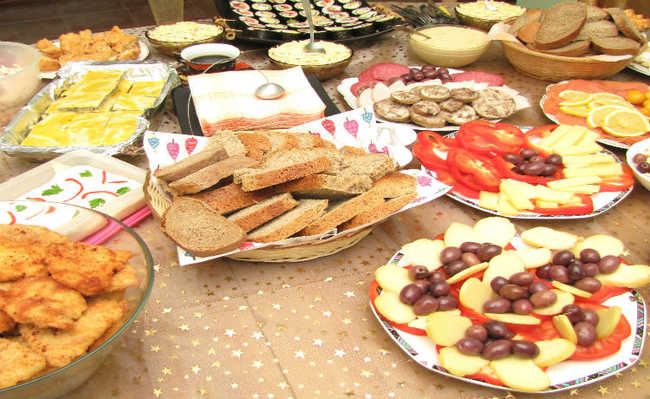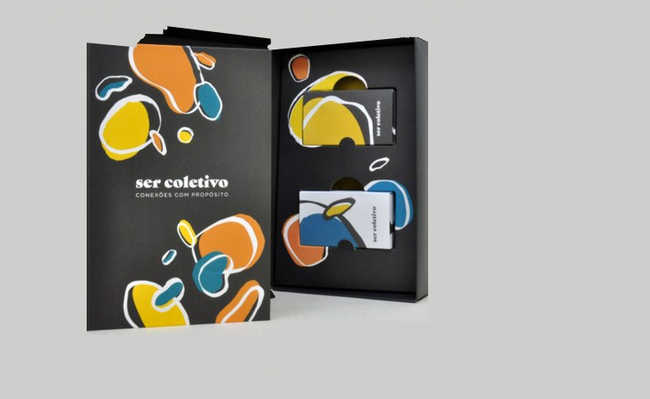Fun Facts About Food You Probably Didn't Know
Sugar as wealth status, beer buried with Egyptian pyramid workers, the sardine boom and much more

Everyone knows that the Chinese invented pasta and that pizza is Italian... But how did sugar come about? Have animals been exterminated by human gluttony for meat? National Geographic made a page that explains the origin of different foods and details some curiosities. And, of course, we also found other little curiosities about inherently Brazilian foods. Take a look:
Sugar
- Before industrialized sugar, our sugar consumption came from fruits. Humans ingest up to three times more sugar than recommended by food authorities, due to added sugar in processed products. See tips on how to leave processed sugar aside.
- Is your body craving sugar? You don't have to get it by eating candy. Nature provides us with sugar in fruits. Raisins, bananas and mangoes are full of sugar and vitamins.
- When sugar was introduced into society, the rich were instantly interested. It was such a rare product at the time that it was considered a spice and became too expensive for commoners. One example of this was Queen Elizabeth of England - she was such a fan of sweets that her teeth were blackened and served as proof of her indulgence. Since sugar was expensive, people began to darken their teeth with other substances to make them look rich. So we can add this habit to the list of bad teeth.
- Brown sugar contains more vitamins and minerals than refined sugar.
Beef
- Cooking makes your food easier to chew and digest, and during this process we can gain more energy with less effort. Heat helps to "break down" food more easily, lessening the strain on our digestive system, as well as killing bacteria before they enter the body.
- The dodo and the woolly mammoth are just a few of the creatures that have disappeared from the face of the earth due to human gluttony.
- The low and slow heat method, often used in barbecues to make the meat soft and tasty, was born from the desire to make the less appetizing and hard parts of the animal more desirable. It takes six square meters of agricultural land, 200 liters of water, three kilos of animal feed and 303 watt-hours of energy in production and transport to make 113 grams of meat.
- Made from soy milk and available in different varieties, tofu contains essential amino acids and can be used as a meat substitute in different dishes.
- Seitan, or gluten-free meat, offers plenty of protein, but because of its high concentrations of gluten it's not recommended for those with dietary restrictions. Tempeh, unlike tofu, is made entirely from soy and used to make veggie burgers. Learn about vegan cuisine.
- Quinoa, a favorite protein source of the ancient Incas, is a versatile ingredient that provides fiber, vitamin E and iron.
- Scientists are working to produce meat in the laboratory without the need to raise animals for slaughter. In 2013, Dr. Mark Post created the first hamburger using stem cells from a cow. The result was edible but rather expensive; 140 g had an estimated production cost of US$ 330,000.
bread and grains
- The cost of grain has increased sevenfold in the last 100 years.
- Carbon dating indicates that agriculture began its development 14,500 years ago. Plants were being harvested, animals were being domesticated, and people were beginning to settle down on patches of land, allowing civilization to become organized and stable.
- Some of the workers involved in building the pyramids in Egypt were paid with food and beer rather than cash. Part of those who died during construction were buried with portions of beer and bread to take with them in the afterlife.
- Before the Industrial Revolution, the process of making fluffy white bread was expensive. Food for the rich was appealing, but it was cheaper, less refined bread that had more nutrients.
- Pasteur's research and the eventual development of pasteurization were stimulated by the desire to solve the problems plaguing the alcoholic industry in France.
- Grains are essential even for meat lovers. In the US, it is estimated that six kilos of grain are needed to produce 450 grams of meat. It's clear that meat production requires a lot of grains, which provide more direct nutrients than meat, and without them we wouldn't have hamburgers or the buns that go with them.
- Soylent, a new instant drink, seeks to offer complete nutrition that allows its consumer to almost entirely stop consuming traditional food. As an overpopulation problem for food producers around the world, innovations like this may be necessary for human survival.
- During long sea voyages it was safer to drink beer than water. Unlike water, beer has a good long-term preservation capacity and is rich in nutrients. In 2010, divers discovered unopened beer bottles that had sunk more than 200 years ago and were still fit for consumption. If 200-year-old beers aren't your taste, how about a beer made from sewage? Tasty all the same, isn't it?
Fish
- While civilians were gradually accepting tuna in their diets at the beginning of the 20th century, it was during World War II that the fish's fame was boosted. To keep American soldiers in good shape despite food rationing during the war, the American government turned canned tuna into a convenient source of protein. Soldiers continued to eat tuna after the war.
- Overfishing is the biggest cause for the decline of the fish population around the world, as it does not allow the recovery of the species even though there are international efforts to regularize it.
Gastronomy and the senses
- Smell has the ability to trigger specific memories, as the brain's olfactory bulb is connected to areas associated with emotions and memories.
- In the early 17th century, explorers brought coffee to the European coast. When the drink was introduced to the city of Venice in 1615, local members of the clergy pleaded with the Pope to condemn this "Bitter Invention of Satan".
- Feeling tired? Save your coffee and eat an apple for an energy boost.
- Many people today don't know a life without frozen food.
- Clarence Birdseye pioneered the quick freezing process in 1924 that helps frozen food retain its flavor. His technique was so innovative and effective that it earned him 168 patents.
- One of the pioneers of modern gastronomy, Auguste Escoffier was known as the “King of Chefs, Chef of Kings”. His contributions include defining the five main sauces and he was one of the first to propose the bottling of sauces for home use.
- Molecular gastronomy is the science of culinary phenomena. Hervé This is a physicist and chemist who uses specific flavor molecules to chemically build flavors. Meanwhile, Pablos Holman proposed creating a 3D printer that prints food. As for food, there are doubts, but we already have 3D printers that print grass.
Check out a video (in English, without subtitles) with Hervé This talking a little more about molecular gastronomy.
Pleasures and the feeling of guilt
- Evolutionarily speaking, salt, sugar and fat are ingredients that provide the energy needed for human beings to become the dominant species on Earth, and our guilty pleasures (those absolutely sinful products that we know you can't eat, but the will ends up being stronger than us) are full of all that and we consume them in large quantities.
- Studies have shown that when your brain is tired, high-calorie foods like hamburgers seem appealing as your body is looking for a quick source of energy.
- Food that melts easily in your mouth or quickly disappears signals your brain that you're not satisfied even though you're eating too many calories.
- the toast of the MC happy snack of the chain of fast foodMcDonalds was introduced to American families in 1979 and made the company the largest toy distributor in the world. O MC happy snack accounts for approximately 20% of sales of the McDonalds.
Final Curiosities
- The microwave oven was invented when a scientist, Percy Spencer, walked in front of an electronic valve (which would later become one of the essential parts of the microwave's construction) and the chocolate in his pocket melted.
- THE American Airlines saved €136 thousand in 1987 by eliminating one olive from every salad served in first class.
- if you ingest a lot wasabi and your mouth starts to "burn", stop breathing through your mouth and start breathing through your nose. The burning will disappear in a few seconds.
- Japanese never order four pieces of anything. For them, the number four is an unlucky number because of its grammatical similarity to the word death ("Shi"). The fear of the number four is known as tetraphobia and is common in countries like China, Korea, Japan and Taiwan.
- The name of the sweet "brigadeiro" comes from Brigadier Eduardo Gomes (brigadeiro, for those who don't know, is an aeronautical post equivalent to the rank of general in the army), a candidate for the presidency of Brazil in 1945. The women who supported him they decided to create a candy to sell and raise funds for the candidate's campaign: it was the "brigadeiro candy".
- Pizza is one of São Paulo's favorite foods and this is nothing new. But, according to a survey released by the ECD Food Service, 53% of pizzas consumed daily in the country end up in the belly of the state's inhabitants. There are five thousand pizzerias in São Paulo, an industry that generates R$ 5 billion per year. That's a lot of money and a lot of pizza, plus a lot of pizza boxes that can't be recycled.










